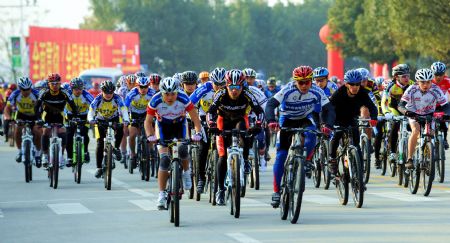China
Chinese embrace once foreign sports
(Agencies)
Updated: 2010-01-08 21:12
 |
Large Medium Small |
|
|
YUXI, China: Running ultra marathons that turn feet into blistered, bloody stumps. Nordic skiing in winter's brutal cold. Riding mountain bikes on rump-numbing trails across the grasslands of Inner Mongolia.
For many Chinese, these have long been things that only crazy foreigners do for fun. But that's not so true anymore. The number of Chinese competing in such adventure sporting events has been growing rapidly in recent years as the country's leisure-loving middle class continues to expand. Many companies are lining up to get a bigger piece of the market, while others see the trend as a new way to promote their products.
When the organizers of the North Face 100 began accepting applications for China's first large-scale ultramarathon last year, they thought that most runners would opt for the 6.2-mile fun-run option, said Julia Cui, director of sports events at Octagon, the marketing company that promoted the event.
Only 100 slots were available for runners who wanted to do the grueling 62.14-mile race, which started at the Great Wall and went through the Ming Tombs outside Beijing last April, Cui said.
The organizers were stunned when 300 people tried to sign up and had to be turned away from the race sponsored by American outdoor gear company The North Face. "We didn't realize that this would be so popular," Cui said.
Octagon has seen a big spike in interest in other endurance events it organizes in China, like the marathon in the eastern city of Hangzhou.
"From 2006, there were only 5,000 people attending the race, but in 2009, there were 14,000," Cui said. "So the increase was huge."
For decades, those who did sports in China were mostly an elite few who were plucked out of school at young ages because they had the right physique or coordination for gymnastics, pingpong, diving or some other event. They spent their youth in state-funded sports organizations, while most other Chinese spent their lives in the fields, factories or pushing paper.
Most Chinese were busy just struggling to make a living. Extra income was spent on food, clothing and other necessities, not $90 trail running shoes that would get you through an ultramarathon.
But that's changing as the ranks of China's new middle class continue to swell. More people have the time and money for recreation, and leisure sports serve as a good "filtering system" for companies who are trying to reach consumers with money to spend, said Chris Renner, president for China of sports marketing agency Helios Partners.
"If you do your consumer-based research, you'll find that amazingly, unlike the United States, when you see people participating, doing walking, running, badminton, swimming, they're all higher level income," Renner said.
"They're higher level because they're the only ones who have leisure time. The 800 million people working in the fields don't have time for that and certainly the migrant workers don't have time for that."
Renner said the growth potential is enormous.
"We're almost starting from scratch, honestly," he said. "And I think there is an appetite as the virtuous cycle of more income, more education, more leisure time starts spinning itself."
The Economist Intelligence Unit said in a report last October that China's sports sponsorship market is worth about $1.5 billion to $2 billion - just a fraction of the global market of $60 billion. Although the state still dominates sports, the report said, commercialization is taking root. But much more development at the grass-roots level is needed, it added.








